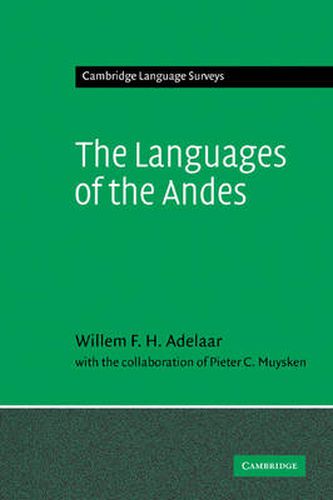Readings Newsletter
Become a Readings Member to make your shopping experience even easier.
Sign in or sign up for free!
You’re not far away from qualifying for FREE standard shipping within Australia
You’ve qualified for FREE standard shipping within Australia
The cart is loading…






The Andean and Pacific regions of South America are home to a remarkable variety of languages and language families, with a range of typological differences. This linguistic diversity results from a complex historical background, comprising periods of greater communication between different peoples and languages, and periods of fragmentation and individual development. The Languages of the Andes documents in a single volume the indigenous languages spoken and formerly spoken in this linguistically rich region, as well as in adjacent areas. Grouping the languages into different cultural spheres, it describes their characteristics in terms of language typology, language contact, and the social perspectives of present-day languages. The authors provide both historical and contemporary information, and illustrate the languages with detailed grammatical sketches. Written in a clear and accessible style, this book will be a valuable source for students and scholars of linguistics and anthropology alike.
$9.00 standard shipping within Australia
FREE standard shipping within Australia for orders over $100.00
Express & International shipping calculated at checkout
The Andean and Pacific regions of South America are home to a remarkable variety of languages and language families, with a range of typological differences. This linguistic diversity results from a complex historical background, comprising periods of greater communication between different peoples and languages, and periods of fragmentation and individual development. The Languages of the Andes documents in a single volume the indigenous languages spoken and formerly spoken in this linguistically rich region, as well as in adjacent areas. Grouping the languages into different cultural spheres, it describes their characteristics in terms of language typology, language contact, and the social perspectives of present-day languages. The authors provide both historical and contemporary information, and illustrate the languages with detailed grammatical sketches. Written in a clear and accessible style, this book will be a valuable source for students and scholars of linguistics and anthropology alike.